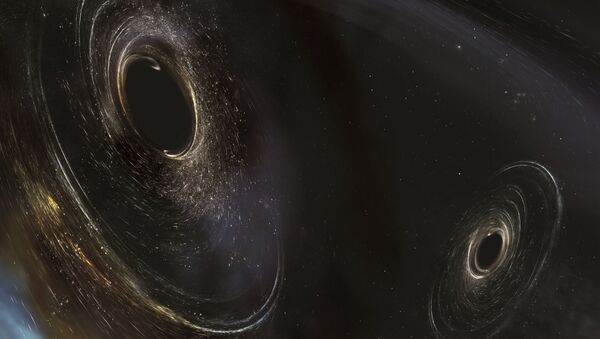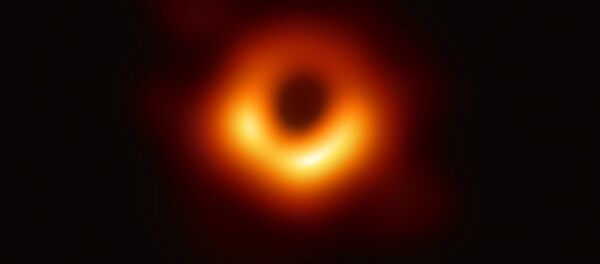銀河系の中心のはるかかなた
天の川銀河とおそらく他のすべての宇宙の銀河の中心には、予想もできない巨大なブラックホールが存在する。我々の場合、ブラックホールは太陽より約400万倍の重さがあり、地球から2万6千光年の距離に位置する。
天文学者らがいて座A*と呼ぶこのブラックホールは、その周りを数十の星といくつかの巨大な星間雲に囲まれ、定期的に接近し、危険な距離を通過する。
This video shows observed stars whipping around an unseen presence—the black hole at our galactic center. @NASAWebb will examine fainter stars also caught in the black hole’s grasp. #BlackHole #MilkyWay Video Credit: Keck/UCLA Galactic Center Group. pic.twitter.com/Q0HkFLBcBK
— SpaceTelescope (@SpaceTelescope) December 19, 2018
いて座A*は多くの他の巨大なブラックホールとは対照的に「休眠状態」にあり、ブラックホールの研究の観点となる問題点を呼び起こすような特別積極的な特徴を発信していない。
Here's a timelapse of images over 2.5 hr from May from @keckobservatory of the supermassive black hole Sgr A*. The black hole is always variable, but this was the brightest we've seen in the infrared so far. It was probably even brighter before we started observing that night! pic.twitter.com/MwXioZ7twV
— Tuan Do (@quantumpenguin) August 11, 2019
This is what the supermassive black hole at the center of our galaxy looks like. The video is a series of infrared images of the center of the Milky Way observed by the Keck telescopes on Mauna Kea, Hawaii. The images were taken over a time span of 3 hours https://t.co/wPHGyddtuO pic.twitter.com/QUT3XGujHX
— Massimo (@Rainmaker1973) March 11, 2019
しかし5月に状況が変化した。研究者らはいて座A*の赤外線エネルギーにとても強く速い変化を記録し始めた。
研究者らの2つの仮設:
- いて座A*は昨年5月に接近したS0-2星を部分的に吸収し引き裂く可能性があった。
- 2年前に危険ゾーンに接近したガス雲G2がブラックホールに到達した。
休眠状態から目覚めたことで、研究者らはブラックホールの放出の構造と物質を吸収する方法を詳細に研究する最初の機会を得ることとなる。
「とても地球的な理由」
残念ながら、研究者らは「地球的な(つまり月並みで平凡、単純な)理由」で貴重な状況を十分に注意深く研究する可能性がない。
先週の金曜日に妥協点が見つかるやいなや当局は抗議者たちに交通機関へのアクセスを開放するよう説得し、停滞していた観測所の作業を再開させた。
しかし、残された時間は非常に少ない。いて座A*が望遠鏡から隠れるまであと数週間しかなく、彼らは来年の初めまで地球からいて座A*の目覚めを観察する機会を失うことになる。これは科学にとって取り返しのつかない損失となるおそれがある。



